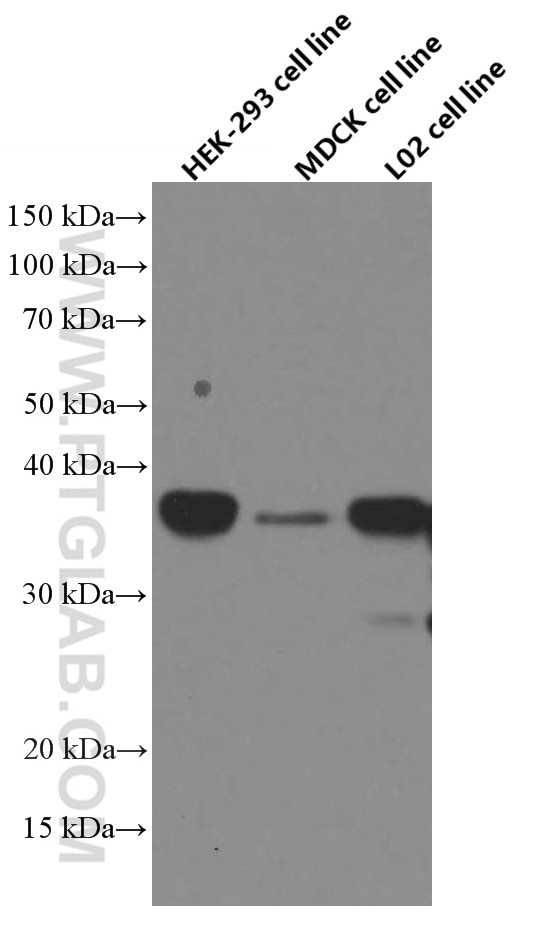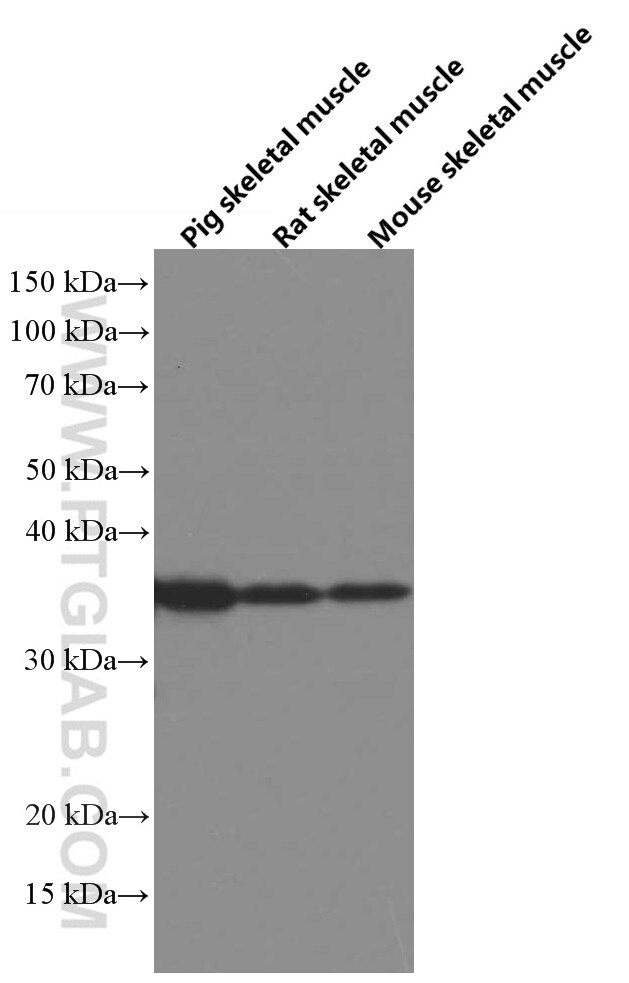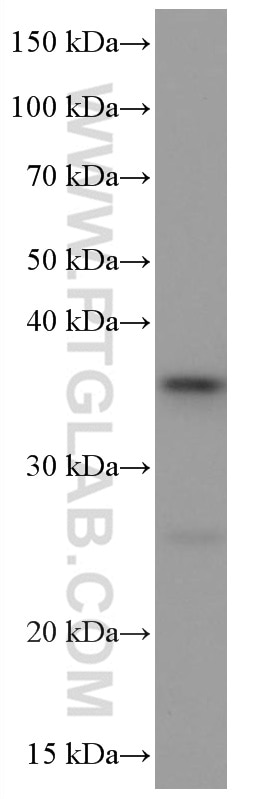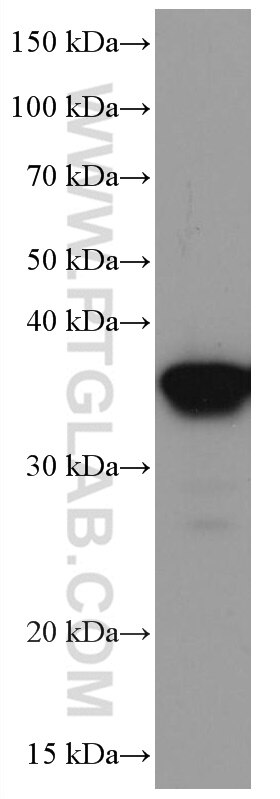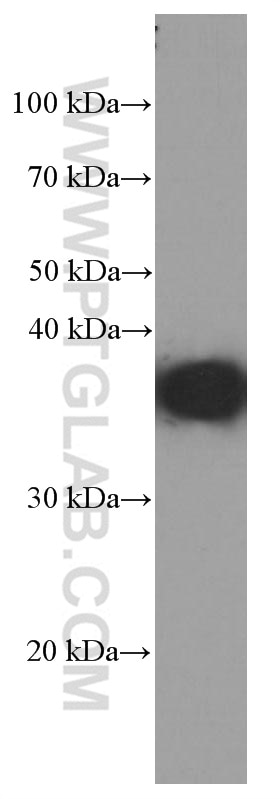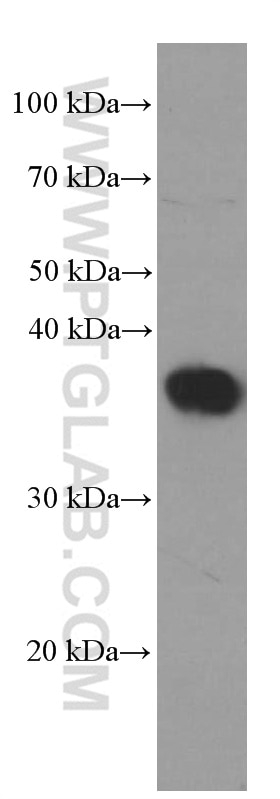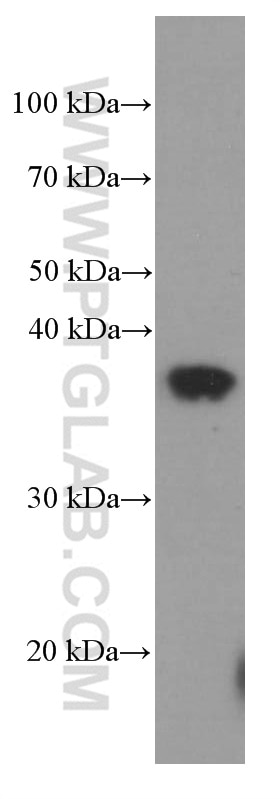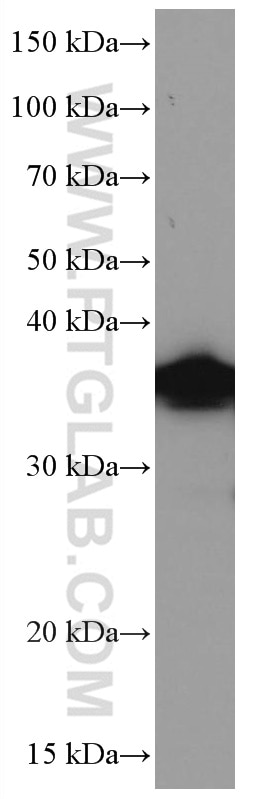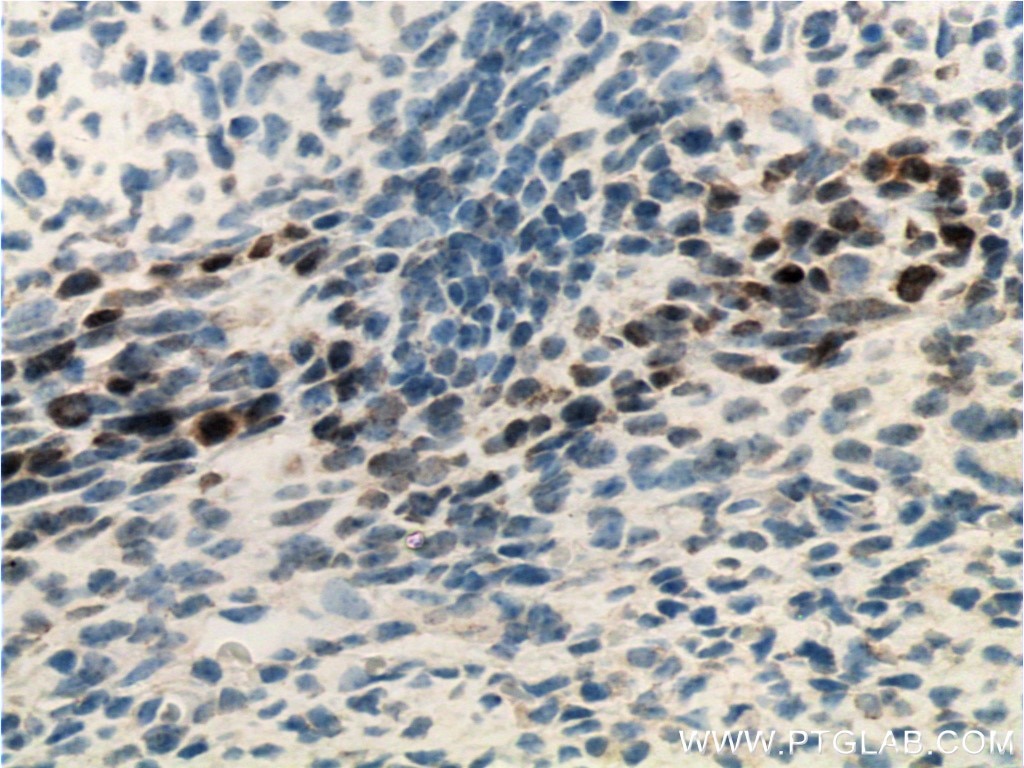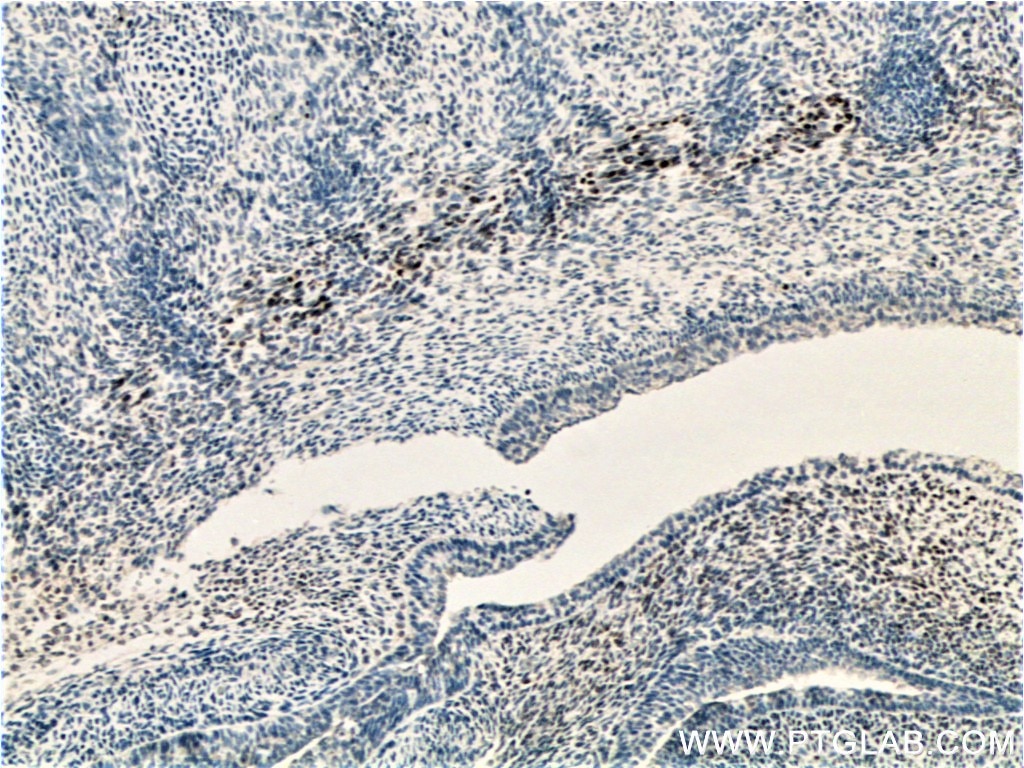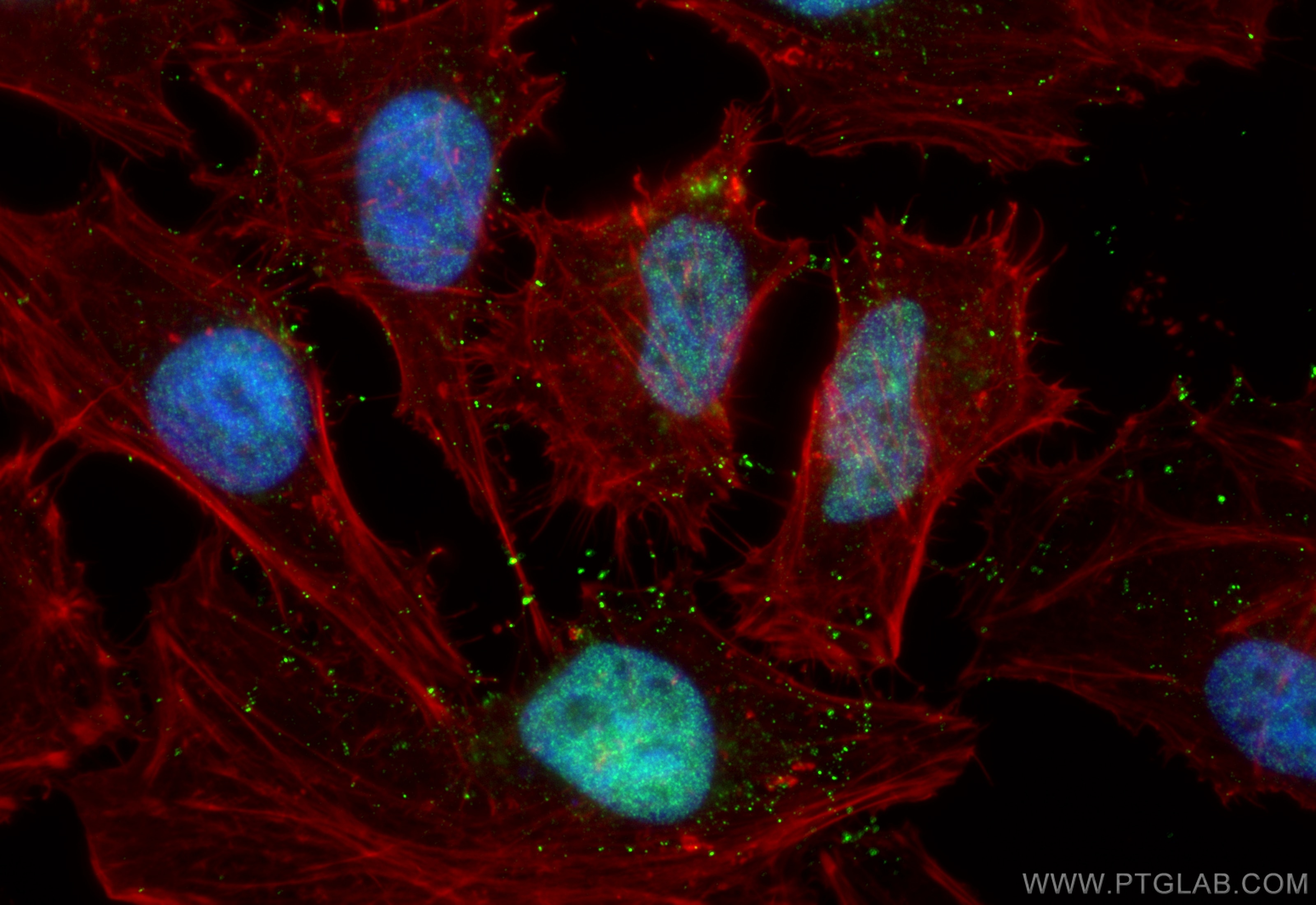Validation Data Gallery
Tested Applications
| Positive WB detected in | pig skeletal muscle tissue, HEK-293 cells, MDCK cells, rat skeletal muscle tissue, NCCIT cells, L02 cells, mouse skeletal muscle tissue |
| Positive IHC detected in | mouse embryo tissue Note: suggested antigen retrieval with TE buffer pH 9.0; (*) Alternatively, antigen retrieval may be performed with citrate buffer pH 6.0 |
| Positive IF/ICC detected in | HeLa cells |
Recommended dilution
| Application | Dilution |
|---|---|
| Western Blot (WB) | WB : 1:1000-1:6000 |
| Immunohistochemistry (IHC) | IHC : 1:50-1:500 |
| Immunofluorescence (IF)/ICC | IF/ICC : 1:200-1:800 |
| It is recommended that this reagent should be titrated in each testing system to obtain optimal results. | |
| Sample-dependent, Check data in validation data gallery. | |
Published Applications
| WB | See 1 publications below |
| IHC | See 2 publications below |
| IF | See 4 publications below |
Product Information
66347-1-Ig targets SIX2 in WB, IHC, IF/ICC, ELISA applications and shows reactivity with human, mouse, rat, pig, canine samples.
| Tested Reactivity | human, mouse, rat, pig, canine |
| Cited Reactivity | mouse |
| Host / Isotype | Mouse / IgG2b |
| Class | Monoclonal |
| Type | Antibody |
| Immunogen | SIX2 fusion protein Ag2124 相同性解析による交差性が予測される生物種 |
| Full Name | SIX homeobox 2 |
| Calculated molecular weight | 291 aa, 32 kDa |
| Observed molecular weight | 37 kDa |
| GenBank accession number | BC024033 |
| Gene Symbol | SIX2 |
| Gene ID (NCBI) | 10736 |
| RRID | AB_2881727 |
| Conjugate | Unconjugated |
| Form | Liquid |
| Purification Method | Protein A purification |
| UNIPROT ID | Q9NPC8 |
| Storage Buffer | PBS with 0.02% sodium azide and 50% glycerol{{ptg:BufferTemp}}7.3 |
| Storage Conditions | Store at -20°C. Stable for one year after shipment. Aliquoting is unnecessary for -20oC storage. |
Background Information
The SIX proteins (sine oculis) are a family of homeodomain transcription factors that share a conserved DNA binding domain. Six members (Six1-Six6) of the Six gene family have been identified in mice and humans. SIX2, containing one homeobox DNA-binding domain, is highly expressed in fetal tissues but expression is limited in adult tissues. SIX2 may be involved in limb tendon and ligament development[PMID:21420949]. It has been previously shown that SIX2 is expressed in developing mesenchymal tissue including head and urogenital system at the time of overt midfacial and renal differentiation[PMID: 22282599].
Protocols
| Product Specific Protocols | |
|---|---|
| WB protocol for SIX2 antibody 66347-1-Ig | Download protocol |
| IHC protocol for SIX2 antibody 66347-1-Ig | Download protocol |
| IF protocol for SIX2 antibody 66347-1-Ig | Download protocol |
| Standard Protocols | |
|---|---|
| Click here to view our Standard Protocols |
Publications
| Species | Application | Title |
|---|---|---|
Development Aberrant centrosome biogenesis disrupts nephron and collecting duct progenitor growth and fate resulting in fibrocystic kidney disease | ||
Biochem Biophys Res Commun Disruption of Gen1 causes ectopic budding and kidney hypoplasia in mice | ||
Dev Dyn Glypican-6 and Glypican-4 stimulate embryonic stomach growth by regulating Hedgehog and non-canonical Wnt signaling | ||
Nucleic Acids Res The transcriptional coactivator Eya1 exerts transcriptional repressive activity by interacting with REST corepressors and REST-binding sequences to maintain nephron progenitor identity | ||
J Am Soc Nephrol Chromatin Remodelers Interact with Eya1 and Six2 to Target Enhancers to Control Nephron Progenitor Cell Maintenance |
